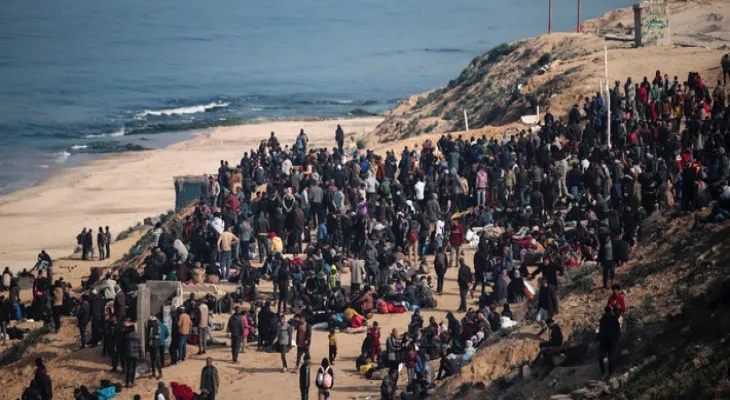Search here
Newspaper
Search here

Arab Canada News
News

Published: January 27, 2025
The process of the return of Palestinian displaced persons from the south of the Gaza Strip to the north began after weeks of forced displacement due to the recent Israeli aggression that led to widespread destruction and the displacement of hundreds of thousands of the population of the Gaza Strip.
Details of the return:
• The gradual start of the return of the displaced to their areas in northern Gaza was announced, amid efforts to rehabilitate some affected areas to ensure the provision of the minimum basic services for the residents.
• This step comes after negotiations and international mediation for a ceasefire, and humanitarian pressures on the occupation to allow the displaced to return to their homes.
Challenges facing the returnees:
1. The destroyed infrastructure:
Many homes and public facilities have sustained severe damage, making life in the northern areas extremely difficult.
2. Humanitarian conditions:
The returnees are facing a severe shortage of water, electricity, and basic services, exacerbating their daily suffering.
3. Security threats:
Despite the ceasefire, there are still concerns about renewed Israeli aggression or the continuation of military threats.
Efforts being made:
• Local and international humanitarian organizations are working to provide urgent assistance to the returnees, including food, water, and temporary shelter materials.
• Human rights organizations are monitoring the situation to ensure that the returnees are not subjected to additional violations or restrictions by the occupation.
International reactions:
• The United Nations and some countries concerned with the conflict in the Middle East welcomed the step of the return of the displaced, but called for ensuring the safety of the population and guaranteeing sustainable access to aid.
• International pressure continues on Israel to stop policies of forced displacement and to provide protection for the civilian population.
Summary:
The return of Palestinian displaced persons from the south to the north represents a positive step, but it is fraught with humanitarian and living challenges, amidst the ongoing Israeli siege and the lack of guarantees against the repetition of aggression. The urgent need remains for local and international efforts to rebuild the sector and ensure a decent and safe life for its people.
Comments